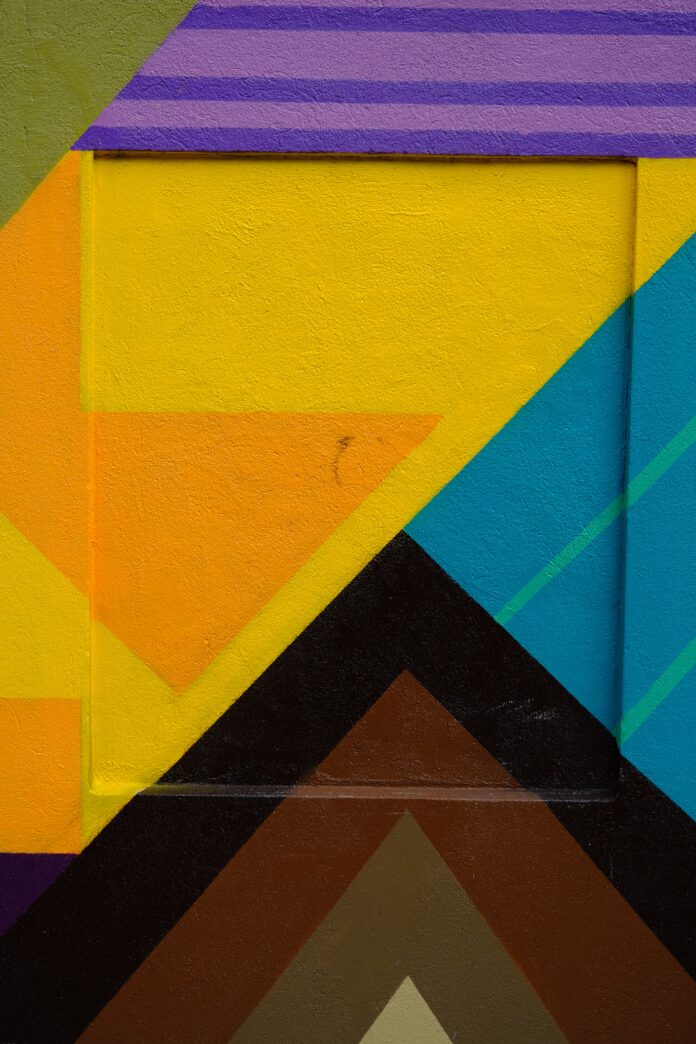Edible QR Codes: Merging Technology and Gastronomy
In the modern age of rapid technological advancement, the integration of digital innovations into various aspects of our lives is a constant endeavor. One such intriguing fusion is the concept of edible QR codes, which ingeniously combines the virtual realm of quick response (QR) codes with the tangible and delectable world of food. These edible QR codes represent an innovative intersection of technology and gastronomy, bridging the gap between the digital and the physical in an unexpected and delightful way.
Edible QR codes are exactly what their name suggests – QR codes that are not only scannable but also consumable. QR codes, originally invented by Denso Wave in 1994 for tracking automotive parts, have evolved into a versatile tool used for various purposes, including marketing, information sharing, and payment processing. These codes consist of a matrix of black squares arranged on a white background, which when scanned by a QR code reader, direct users to a specific web link, text, or other types of digital content. The rise of smartphones equipped with cameras and QR code scanning capabilities has popularized their usage in numerous industries. However, the concept of edible QR codes transforms these digital squares into a blend of technology and culinary artistry.
Exploring the Convergence of Taste and Technology
The idea behind edible QR codes is not merely to create a novel gimmick, but rather to establish a novel way of engaging with technology, especially in the realm of marketing, entertainment, and even education. The foundation of edible QR codes lies in the fusion of safe-to-consume materials and the standard QR code structure. This entails using edible substances to create the dark (usually black) areas of the QR code matrix, while the background remains edible in its entirety.
The development and realization of edible QR codes demand a meticulous understanding of both the digital encoding behind QR codes and the culinary chemistry that constitutes the edible components. The materials used must be safe for human consumption, visually distinguishable, and capable of being accurately scanned by QR code readers. This intricate balance between aesthetics, technology, and safety underscores the innovative nature of edible QR codes.
Incorporating edible QR codes into the culinary world opens up a spectrum of creative possibilities. Food establishments, for instance, can imprint these codes onto their dishes using edible ink or carefully assembled ingredients. When patrons scan these codes with their smartphones, they could be redirected to a website detailing the recipe’s origin, nutritional information, or cooking techniques. This presents an engaging blend of storytelling and gastronomy, where the act of consuming food is complemented by an augmented digital experience.
Moreover, events and marketing campaigns can leverage edible QR codes to craft interactive experiences. Imagine a chocolate manufacturer celebrating its anniversary by creating a limited series of QR code-marked chocolates. Scanning these codes would not only reveal the company’s journey over the years but also offer participants a chance to win exclusive discounts or even a tour of the chocolate-making facilities.
Edible QR codes can also be harnessed for educational purposes. In museums or art galleries, artworks could be accompanied by these codes, providing viewers with instant access to detailed information about the artist, the piece, and the historical context. This seamless convergence of art and technology enhances the viewer’s understanding and appreciation of the artwork without detracting from the visual experience.
In conclusion, the emergence of edible QR codes exemplifies the innovative spirit that characterizes the ever-evolving relationship between technology and various facets of our lives. From enhancing culinary experiences and event marketing to enriching educational ventures, these codes have the potential to revolutionize how we interact with both our food and the digital realm. As this concept continues to mature, it will be captivating to witness the myriad ways in which creative minds amalgamate taste and technology, opening new avenues for engagement, entertainment, and enlightenment.
Fusion of Taste and Technology:
Edible QR codes bring together the world of taste and technology, creating a unique and engaging experience for consumers. By combining safe-to-consume materials with QR code encoding, these codes offer a seamless convergence of the physical and digital realms.
Interactive Engagement:
Edible QR codes enable interactive engagement by allowing users to scan and access digital content related to the food or product. This engagement can range from accessing recipes, nutritional information, origin stories, to promotional offers and multimedia experiences.
Creative Marketing Tool:
For businesses, edible QR codes present a creative and innovative marketing tool. They can be incorporated into product packaging, dishes at restaurants, or promotional events, adding an element of surprise and delight for customers while delivering valuable information or offers.
Augmented Educational Experiences:
Edible QR codes can enhance educational experiences in various settings. Museums, galleries, and educational institutions can use these codes to provide instant access to detailed information about exhibits, artworks, historical contexts, or scientific concepts, enriching the learning experience.
Culinary Storytelling:
Edible QR codes offer a new dimension of culinary storytelling. Chefs and food artisans can use these codes to share the journey behind a dish, its ingredients, preparation techniques, and cultural significance, adding layers of narrative to the act of dining.
The concept of edible QR codes marks a fascinating intersection of innovation, gastronomy, and technology. It represents a novel and unconventional way of intertwining the virtual world with the physical, creating a memorable and immersive experience for individuals. This innovative approach has sparked curiosity and interest across various industries, from food and beverage to art and education.
At its core, an edible QR code is a visual representation of data, just like its traditional digital counterpart. However, what sets it apart is the incorporation of consumable materials that bring this code to life. Imagine looking at a plate of beautifully arranged dishes at a restaurant, and amidst the culinary artwork, there’s a QR code waiting to be scanned. It’s not just a code; it’s an invitation to a digital dimension that complements the sensory journey of taste with a digital adventure of information.
The creation of edible QR codes requires a meticulous understanding of both culinary artistry and digital encoding. Culinary experts collaborate with technology enthusiasts to craft codes that not only look visually appealing but are also scannable and accurate. The edible materials used for creating the dark and light areas of the QR code matrix must not only be safe for consumption but also possess the necessary contrast for easy scanning. It’s a delicate balance that blends the aesthetics of cuisine with the functionality of technology.
In the realm of fine dining, edible QR codes have become a canvas for chefs to express their creativity beyond the plate. These codes can be carefully integrated into dishes, adding an element of surprise to the dining experience. The codes might lead diners to a webpage detailing the story behind the ingredients, the inspiration for the dish, or even a video of the chef explaining the culinary craftsmanship involved. This interactive layer transforms a meal into an immersive narrative, where each bite tells a story, and each scan uncovers a new chapter.
Food festivals and events have also embraced edible QR codes as a way to engage attendees and enhance their overall experience. Imagine attending a food festival celebrating international cuisine. Each booth features a signature dish, accompanied by an edible QR code. Scanning the code reveals not only the recipe and cultural significance of the dish but also a virtual journey to the region it originates from. This creative integration of technology adds depth to the event, turning it into an exploration of flavors, cultures, and stories.
Art and technology enthusiasts have recognized the potential of edible QR codes to create unique interactive installations. Imagine an art gallery featuring a sculpture made entirely of edible materials, with a QR code embedded within its design. The code, when scanned, transports the viewer into the mind of the artist through a virtual gallery tour, artist interviews, and insights into the creative process. This convergence of art, gastronomy, and technology offers a multi-dimensional experience that challenges traditional boundaries.
Edible QR codes also hold promise in the realm of education. Science museums, for example, could use them to enhance exhibits related to nutrition. A display of fruits and vegetables could include QR codes that, when scanned, provide visitors with detailed nutritional information, the role of specific nutrients in the body, and even interactive quizzes to reinforce learning. This approach transforms learning from a passive activity to an engaging exploration.
The implications of edible QR codes extend beyond entertainment and education. In emergency situations, such as natural disasters, these codes could be used to label relief food packages. Scanning the code could provide recipients with information about the contents of the package, expiration dates, and instructions for safe consumption. This blend of practicality and technology could streamline relief efforts and ensure the well-being of those in need.
The development and integration of edible QR codes also raise questions about sustainability. As the world becomes increasingly conscious of environmental impact, it’s important to consider the materials used to create these codes. Exploring biodegradable, eco-friendly options for the edible components could align with the values of sustainable consumption and innovation.
In conclusion, the concept of edible QR codes transcends mere novelty; it’s a testament to human ingenuity and the capacity to blend seemingly unrelated elements into a harmonious whole. The fusion of technology and gastronomy not only offers new ways to engage with our surroundings but also challenges us to rethink the boundaries of creativity. From enhancing culinary experiences to transforming education and art, edible QR codes exemplify the exciting journey at the crossroads of taste and technology. As this concept continues to evolve, it’s certain to inspire new perspectives and redefine the way we interact with the world around us.


















